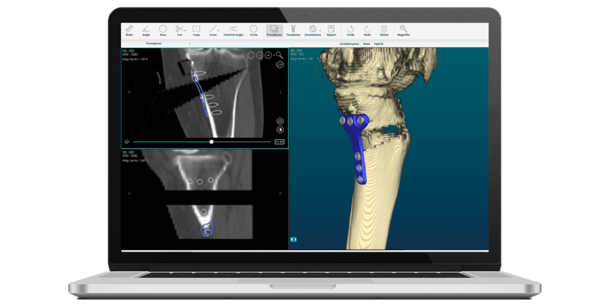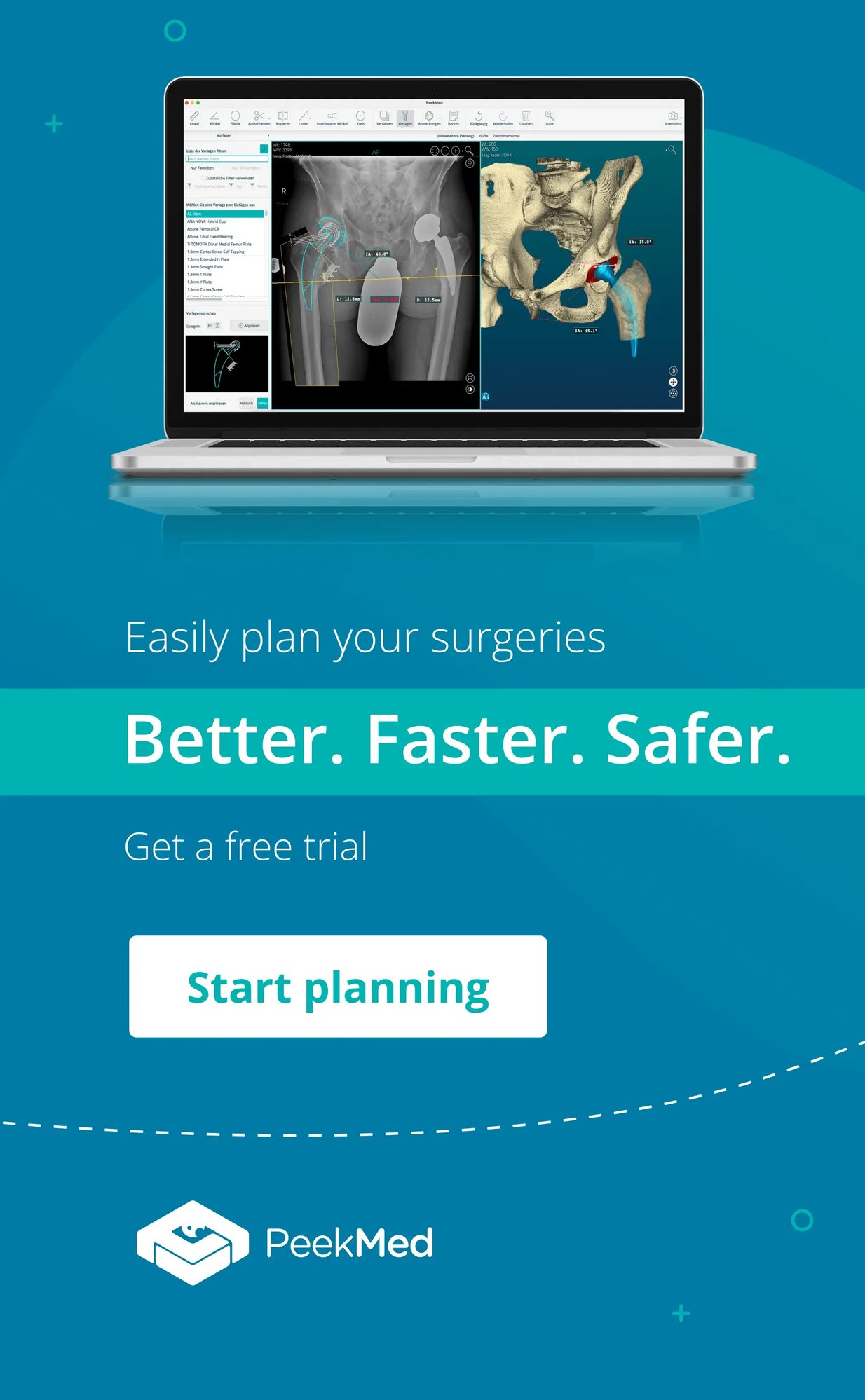PeekMed
Osteosynthesis is a common surgical procedure used in orthopedics – both for elective surgery and in traumatology.
As you know, and to make it clear what is osteosynthesis, it’s, by definition, a reconstructive surgery that has the goal of joining two broken bones.
After the proper alignment has been gained, the union is mechanically stabilized – for instance, if you use a plate, it would be a plate osteosynthesis.
Following that idea, it’s important to start to highlight what are the types of osteosynthesis.
Types of Osteosynthesis
-
External Osteosynthesis: as the name suggests, external osteosynthesis surgery is when you fix the bone fracture externally to the body.
-
Internal Osteosynthesis: In this case, it often involves mechanical devices. Commonly these are referred to as osteosynthesis plates, screws, and nails.
Obviously, different osteosynthesis types apply to different cases.
While osteosynthesis has been done for decades, now it has had significant contextual changes in the last few years. Many of these have been provided by how technology has evolved in the previous few years, making it easier for surgeons to understand how to better interact with their patients and making accessing more efficient work.
In this article, we will be exploring that specific topic.

Osteosynthesis: Benefits and How to Use Technology to Make it Better
Each patient is a patient with unique characteristics and body types. Hence, there is no one-size fits all.
One might think that while it is desired to do a unique approach to each patient, it isn’t possible due to the lack of time and resources.
However, the truth is, and as we’ve just suggested, technology has evolved and now helps surgeons do personalized medicine in just a few seconds.
Let’s take as an example PeekMed in a very simplistic way. If you, as a surgeon, combine medical imaging with PeekMed, the system will provide you back with insights that would not be possible before the surgery starts.
Insights may be information such as bone measurements or angles that you may need to decide the best approach beforehand – which is one of the biggest advantages of preoperative planning.
In the specific, preoperative planning of a case of osteosynthesis, using PeekMed, has two main benefits:
-
PeekMed uses Artificial Intelligence to provide the surgeon with suggestions regarding that specific patient's body type. This happens to take into consideration huge amounts of big data and possible outcomes. Thus, to make a more accurate decision.
-
PeekMed has a huge database – which is constantly being updated – of implants. Surgeons are often familiar with specific implants and may be inclined to choose them when doing the preoperative planning of the osteosynthesis. What happens is that PeekMed will suggest to the surgeon a specific implant that is likely to have the best possible outcome. This suggestion can, however, be changed according to your preferences.
Osteosynthesis and Diaphyseal: planning for success,
A practical example of when to use osteosynthesis implants is to treat a diaphyseal fracture.
Diaphyseal fractures are one of the most common procedures in traumatology.
After the fracture, fixation devices – such as the already mentioned osteosynthesis screws and plates – are used to unite the bone again.
Let’s take the example of a distal tibial fracture after orthopedic trauma.
With a few clicks, PeekMed will automatically provide all the measures and angles between fractures, considering the unique patient anatomy.
While this is just an example, when it comes to fixation it’s possible to plan every bone in the body.



